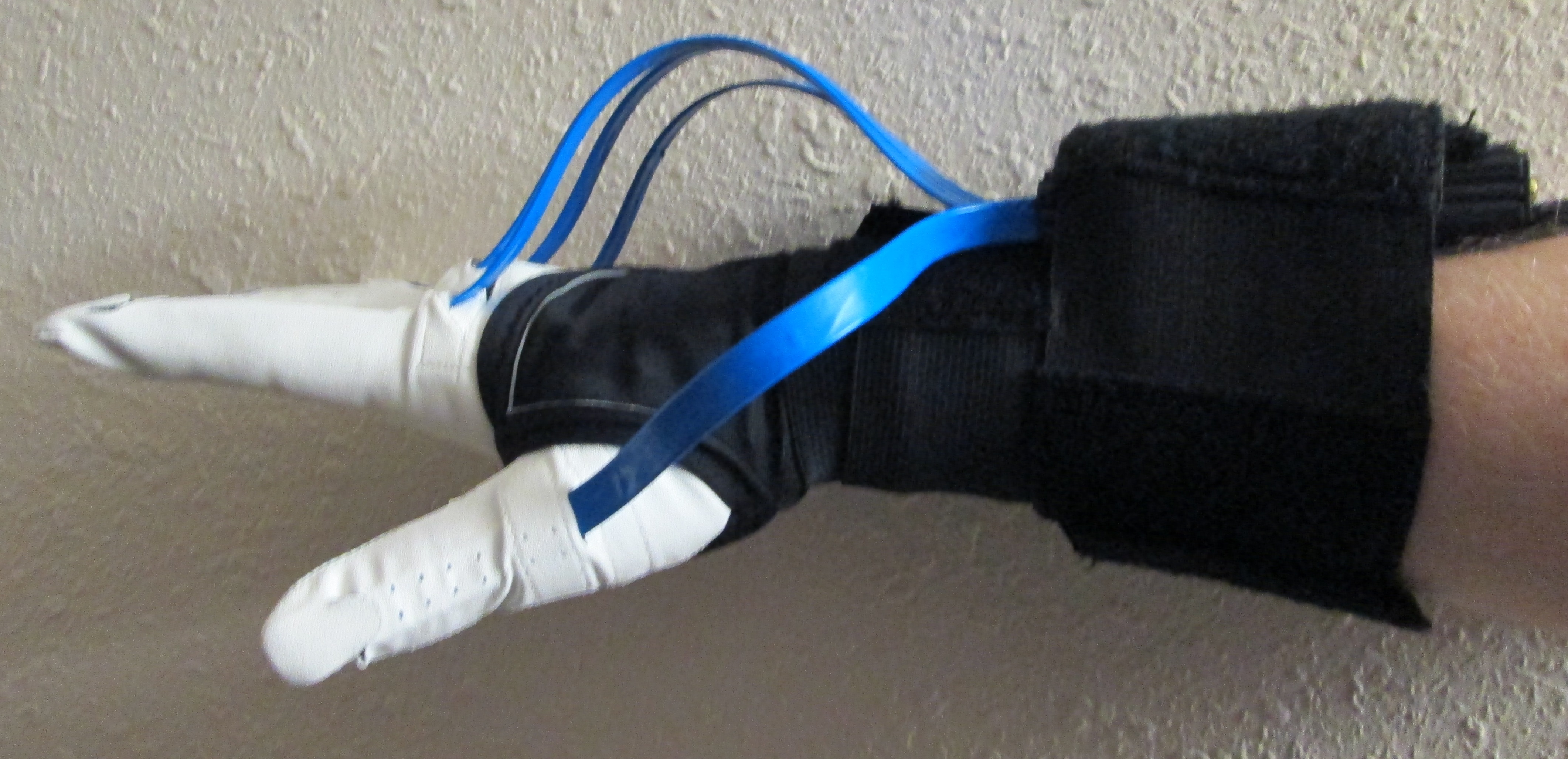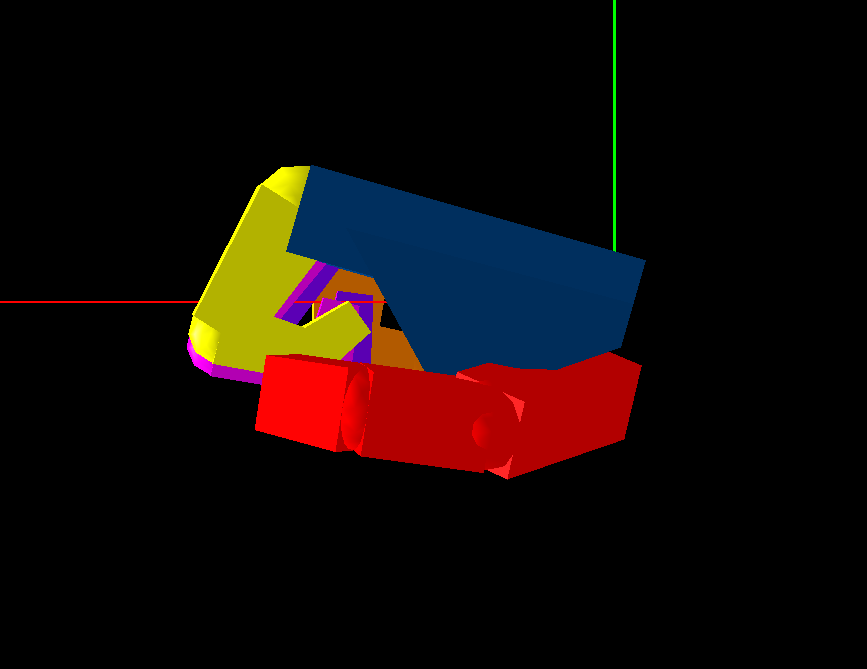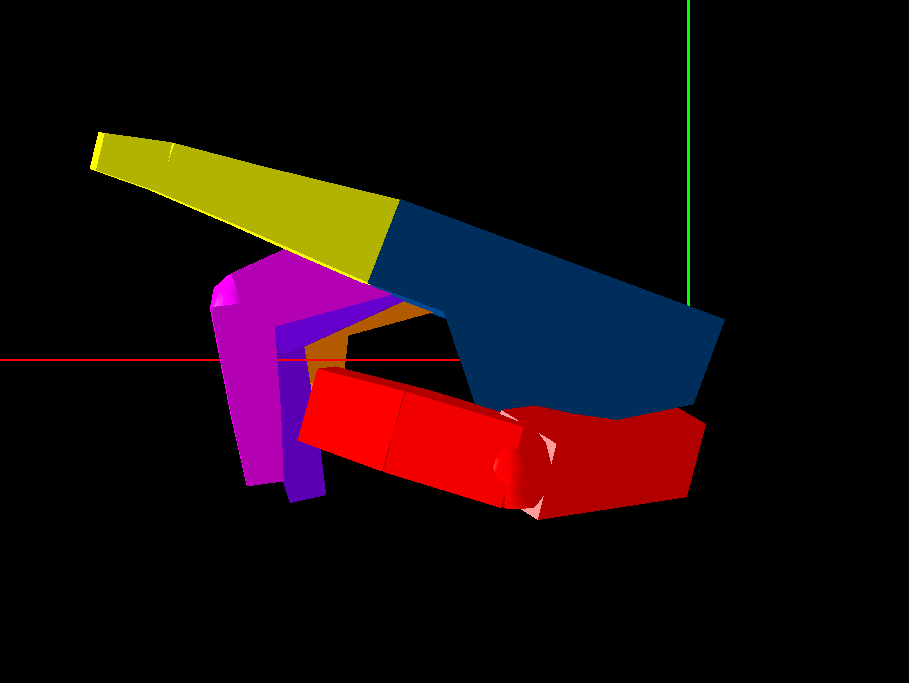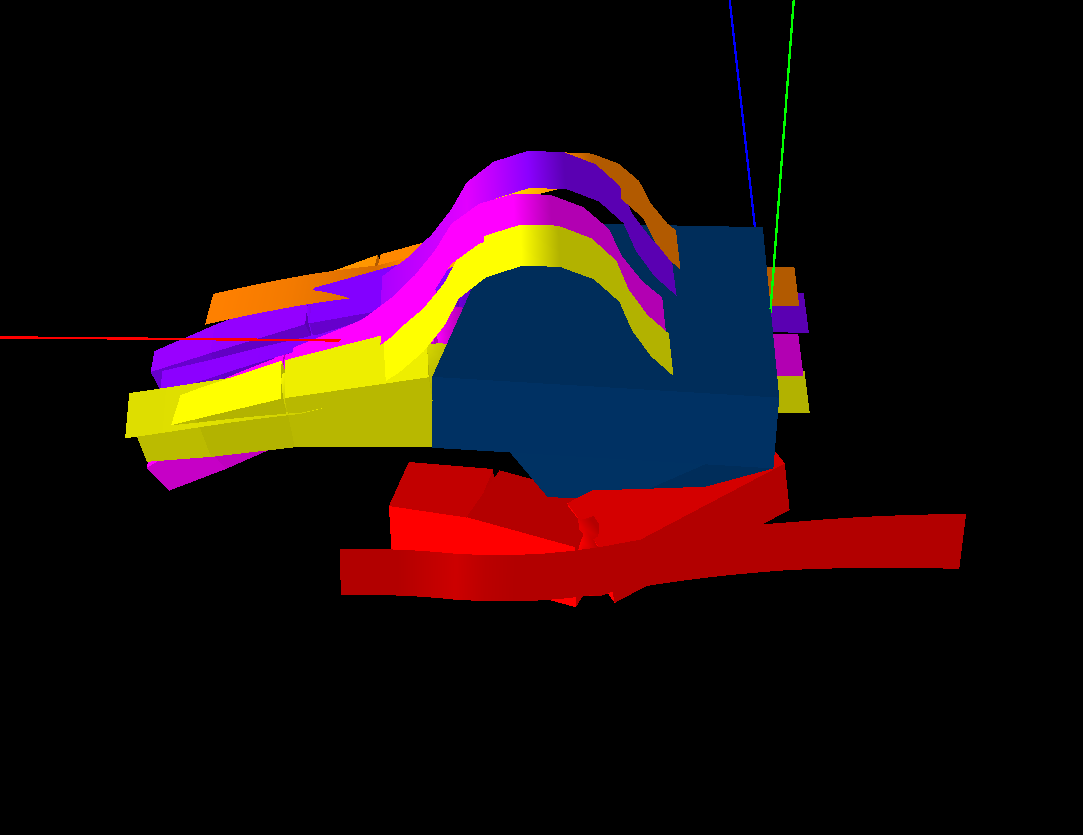Measurand ShapeHand
May 2014

I had to opportunity to use the Measurand ShapeHand over a period of about 6 months. The primary application was the Measurand ShapeRecorder and a custom program I wrote to characterize the shape tapes themselves. I was debating on whether to use the flex sensors in another application. Now what’s so very cool about this data glove is that it’s fiber optic based. Each tape can measure bend and twist along the tape. If you open up the blue tape you’ll see small 250um plastic optic fiber with sense zones along the fiber that glove red. Measurand has scored these sense zones so they act like a differential sensor in which they can derive bend and twist along the tape. In the ShapeHand configuration there are 8 sensors per tape measuring the bend and twist of the steel tape to which they’re attached. Apparently they developed this technology in partnership with the Canadian Space agency.
The ShapeHand consists of several pieces. The main piece is the shape tapes themselves and the data acquisition box. Then there is a golf glove with slits in it for holding the tapes in place and a what looks like a wrist guard. Then there are two more pieces of fabric with velcro to wrap around the glove to hold everything into place. It takes about 5-10 minutes to put on and can be some what difficult the first few times. It’s definitely easier if some one helps you put it on. Be sure to follow the instructions on this one.

The glove comes with software called ShapeRecorder which contains tons of calibration and customization to tweak the glove performance. It also provides a basic graphic view of the glove and or tapes to get visual feedback on how well the glove is calibrated. The main purpose of the software is too allow recording of the sensor data for processing offline. There are calibration files to store the parameters for specific individuals. There are also plenty of graphics customization such as changing the color of the hand model or tape models. You can see a few screen shots of my hand in ShapeRecorder below.

Fist |

Pointing index finger |

Tape view |

Tape + hand view |
Now this isn’t your average persons data glove. The ShapeHand will cost you $11,000. Yes, $11k. It comes with left and right hand gloves and the tapes and acquisition box are reversible for either configuration. It’s one of the few, if any, fiber optic based data gloves you can buy. Fiber optic bend sensors are the most ideal sensors in data glove appliations. Their response is fast, has lower drift, and virtual no under or over shoot when compared to other technologies like conductive ink and conductive rubber. Measurand ShapeTape has the ability to measure bend and twist which makes it a very unique solution. The update rate of the sensors seems to be about 80Hz on average in my single glove configuration.
I spent most of my time interfacing with the sensors using the Measurand ShapeAPI which was very easy to use. The ShapeAPI will give you access to the raw sensor data polled directly from the glove if you want to write your own calibrations or derive bend and twist yourself. You’ll get a differential signal for each “sensor”. Meaning there will be two signals per sensor. The signals from the sensor will move in unison when only bend is applied and will move in opposite directions when twist is applied. These sensors are distributed along the metal tape.
The Measurand ShapeHand is a very cool data glove and one of the most expensive I’ve used. The price will keep it out of the reach of most people. There tends to be a resistance to using data gloves from some because they don’t want to don a glove. That group will especially avoid the ShapeHand because of its lengthy procedure to actually put on the glove. Unless you have a very specific requirement that ShapeHand fulfils I think most people will opt to purchase another data glove like the 5DT or Cyberglove. It really depends on what you intend on doing with it.
 Mellott's VR
Mellott's VR